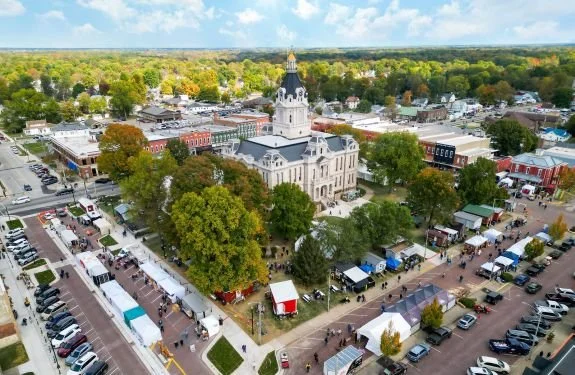homestate indiana
By Ben Everidge for Thomas
Photo Credit: Visit Indiana
Indiana at the Crossroads: 10 Issues That Define the hoosier state’s Future
“Indiana doesn’t chase the spotlight; it builds the stage. In a country that talks too much and listens too little, the Hoosier State still believes that progress comes from rolling up your sleeves.”
- Ben Everidge
Indiana has always been a state that values work. Not just a means to make a living, but a way to build a life. Its steady economy, strategic location, and practical-minded citizens have long made it a pillar of the American Midwest. Yet even Indiana must now reckon with new realities: automation, healthcare costs, climate impacts, and demographic shifts. The state’s future will depend on whether its tradition of common sense can meet the challenges of a changing world with equal imagination.
1. Economic Growth and Industry Transition
Manufacturing remains Indiana’s backbone, but automation and global competition are reshaping the landscape. The next decade will hinge on how well the state transitions to advanced manufacturing, tech, and green energy industries.
2. Workforce and Education Alignment
Indiana’s workforce participation remains strong, but skill gaps persist. Strengthening K-12 education, technical training, and partnerships between businesses and universities will determine whether Hoosiers stay ahead of the curve.
3. Health Access and Affordability
Indiana ranks near the bottom nationally in public health outcomes. Expanding access to care, addressing rural hospital closures, and tackling opioid addiction are essential to both quality of life and workforce stability.
4. Infrastructure and Transportation
As the “Crossroads of America,” Indiana’s highways, rails, and logistics systems are vital to its identity. Maintaining and modernizing this infrastructure, while expanding broadband, will keep it competitive in the 21st-century economy.
5. Population Growth and Demographic Change
Indiana’s population is aging, and younger residents are leaving for bigger cities. Attracting new families, immigrants, and skilled workers will be key to sustaining long-term growth and vitality.
6. Energy, Environment, and Sustainability
Coal has powered Indiana for generations, but environmental and economic realities are shifting. Investing in clean energy, reducing emissions, and protecting natural resources like Lake Michigan will shape the state’s environmental future.
7. Urban Revitalization and Rural Renewal
Indianapolis continues to thrive, but many small towns struggle with disinvestment and job loss. Targeted regional planning and rural innovation could bridge the divide and restore balance between city and countryside.
8. Political Polarization and Governance
Indiana’s political stability has often been a source of strength. But polarization and national party pressures threaten that balance. Encouraging pragmatic, independent leadership could restore the bipartisan spirit that once defined the Hoosier ethic.
9. Public Safety, Housing, and Community Well-being
Rising housing costs and urban crime rates are challenging once-stable communities. Investments in affordable housing, community policing, and neighborhood revitalization can help strengthen social cohesion.
10. Higher Education, Innovation, and Quality of Life
Indiana’s universities – from Purdue to Notre Dame – are national powerhouses. Leveraging research, entrepreneurship, and public-private partnerships can transform academic excellence into statewide innovation and opportunity.
The Thomas Take
Indiana doesn’t seek attention; it seeks results. The Hoosier State’s future will depend on whether it can keep its core values of hard work, humility, and practicality, while embracing the creativity needed for modern growth. If it succeeds, Indiana will prove once again that quiet confidence can build what noise never will: trust, progress, and a better tomorrow.
To learn more about Indiana’s issues, read:

